Light's Embrace |
|||||||||||||||||||||||||||||||||||||||||||||||||
 |
 |
||||||||||||||||||||||||||||||||||||||||||||||||
Crochet DROPS poncho with lace pattern, worked top down in ”Paris”. Size S-XXXL.
DROPS 169-4 |
|||||||||||||||||||||||||||||||||||||||||||||||||
|
PATTERN: See diagrams A.1 to A.5. Diagrams A.1a and A.1b show how round beg and ends. CROCHET INFO: Beg every dc round with 3 ch (these ch do not replaces first dc). At the end of round work 1 sl st in 3rd ch at beg of round. NOTE: When working A.5 beg round with 3 ch. At the end of round work 1 dc in first st worked on round (i.e. st with the 3 ch in), then 1 sl st in 3rd ch at beg of round. WORK 2 TR TOG: Work 1 tr around ch-space below but wait with last pull through (= 2 loops on hook), skip 1 sc and work 1 tr around next ch-space but on last pull through, pull yarn through all loops on hook. WORK 3 TR TOG: Work 1 tr but wait with last pull through (= 2 sts on hook), work 1 more tr but wait with last pull through (= 3 loops on hook), work 1 more tr but on last pull through, pull yarn through all loops on hook. MESH PATTERN: ROUND 1: * Start with 1st row of A.5, work the 4 dc in first/next dc with marker, work (1 ch, ship 1 dc, 1 dc in next dc) until 1 dc remains before next marker, work 1 ch, skip next dc *, repeat from *-* 3 times more. There is now 4 repeats of A.5 on round. ROUND 2: * Work A.5 around first/next ch-space with marker, then work 1 dc in next dc, 1 ch, 1 dc around first ch-space, (1 ch, skip 1 dc, 1 dc in next ch-space) until 1 ch-space remains before next repeat of A.5, work 1 ch, 1 dc in next dc *, repeat from *-* 3 times more. ROUND 3: * Work A.5 around first/next ch-space with marker, then work (1 ch, skip 1 dc, 1 dc around next ch-space) until next repeat of A.5, 1 ch *, repeat from *-* 3 times more. ---------------------------------------------------------- PONCHO: Worked in the round, top down. First inc mid front, mid back and on each shoulder, then inc only mid front and mid back. Work 153-163-163 ch on hook size 4.5 mm/US 7 with Paris and form a ring with 1 sl st. Work 3 ch – see CROCHET INFO! Then work 1 dc in each of the next 3-1-1 ch, * skip ch 1, 1 dc in each of the next 5 ch *, repeat from *-* 24-26-26 more times on round = 128-136-136 dc + 3 ch on round. Now insert 4 markers from beg of round without working: Insert 1 marker in 1st dc on round (= mid back), skip 31-33-33 dc, insert 1 marker in next dc (= shoulder), skip 31-33-33 dc, insert 1 marker in next dc (= mid front), skip 31-33-33 dc, insert 1 marker in next dc (= shoulder), there are now 31-33-33 dc between last marker and beg of round. Now work MESH PATTERN - see explanation above. When 1st- 3rd round have been worked, repeat 2nd and 3rd round until 6-7- 8 rounds with mesh pattern have been worked - see diagram A.4a and A.4b to see how to work the whole inc in each side of A.5. REMEMBER THE CROCHET GAUGE! Piece measures approx. 8-9-10 cm / 3"-3½"-4''. Work next round as follows AT THE SAME TIME dec 0-8-8 dc evenly (= 0-4-4 dc dec on each side of mid back and mid front): *Work (2 dc, ch 3, 2 dc) around ch-space (= mid back on 1st repetition and mid front on 2nd repetition), then work 1 dc in every dc and 1 dc around every ch until next inc dc-group, work 3 dc around ch-space (= shoulder), work 1 dc in every dc and 1 dc around every ch until inc dc-group (mid front on 1st repetition and mid back on 2nd repetition)*, repeat from *-* 1 more time. There are now 117-125-133 dc between ch-space mid front and mid back (= 234-250-266 dc in total on round + 2 ch-space). Cut the yarn. NOTE: Then do not inc on each shoulder but only mid front and mid back on poncho. Work 1 sl st in 10th st from ch-space mid back and work pattern as follows: Work A.1a (shows how round beg and end, does not replace first st), A.2a (= 8 dc) 13-14-15 times in width, A.3a (= inc mid front), continue with A.2a 14-15-16 times in width, A.3a (= inc mid back) and A.2a 1 time in all sizes. On 4th round in A.3a there are 133-141-149 dc between ch-space mid front and mid back. Continue with pattern as before (there is now room for 16-17-18 repetitions A.2a on each side of A.3a). On 10th round inc 8 dc evenly on each side of A.3a (= 16 dc in total on round) = 163-171-179 dc on each side of ch-space mid front and mid back. Continue with pattern as before, but now work A.1b over A.1a, A.2b over A.2a and A.3b over A.3a (there is now room for 19-20-21 repetitions A.2 on each side of A.3). On 4th round inc 3 dc evenly between every repetitions of A.3 (i.e. 6 dc in total on round) = 169-177-185 dc between each ch-space mid front and mid back. Continue pattern (there is now room for 21-22-23 repetitions A.2 on each side of A.3). When entire diagram has been worked vertically, piece measures 36-37-38 cm / 14 1/4"-14½"-15". Cut the yarn. Now work mesh pattern as at beg of piece. Beg in ch-space mid back, and work mesh pattern from 3rd round in mesh pattern. Repeat 2nd and 3rd round until 6-8-10 rounds in total have been worked (includes last round in A.2 and A.3). Work next round as follows: * Work (2 dc, ch 3, 2 dc) around ch-space (= mid back), then work 1 dc in every dc and 1 dc around every ch until next rep of A.5 *, repeat from *-* 1 more time = 193-209-225 dc between ch-space mid front and mid back. Cut the yarn. Now work pattern A.1a, A.2a and A.3a as follows: Work 1 sl st in 12th dc from ch-space mid back and work pattern as follows: Work A.1a (shows how round beg and end, does not replace first st), A.2a until 2 dc remain before ch-space mid front, A.3a (= inc mid front), continue with A.2a until 2 dc remain before ch-space mid back, A.3a (= inc mid back) and A.2a 1 time in all sizes. When 4th row has been worked vertically, poncho measures 49-52-54 cm / 19 1/4"-20½"-21 1/4". Fasten off. |
|||||||||||||||||||||||||||||||||||||||||||||||||
Diagram explanations |
|||||||||||||||||||||||||||||||||||||||||||||||||
|
|||||||||||||||||||||||||||||||||||||||||||||||||

|
|||||||||||||||||||||||||||||||||||||||||||||||||
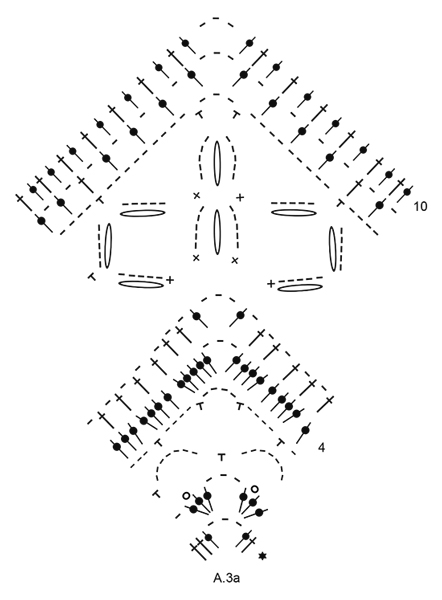
|
|||||||||||||||||||||||||||||||||||||||||||||||||
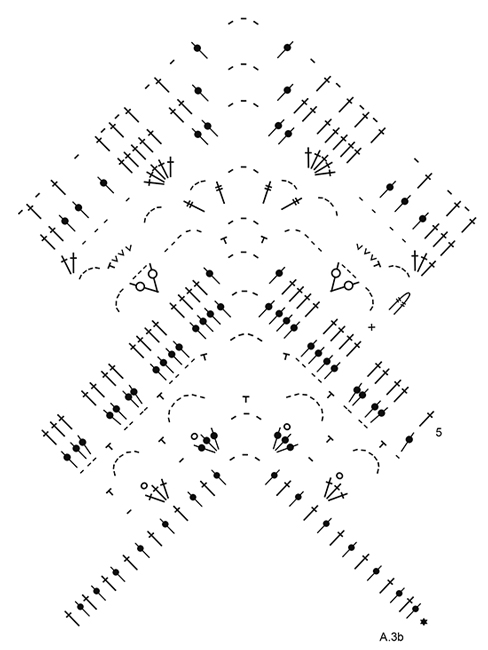
|
|||||||||||||||||||||||||||||||||||||||||||||||||

|
|||||||||||||||||||||||||||||||||||||||||||||||||
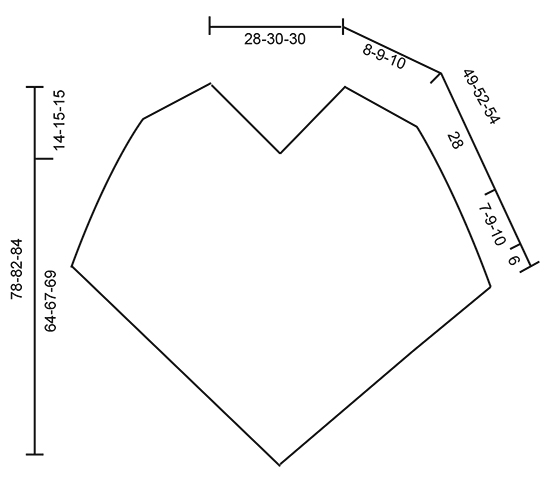
|
|||||||||||||||||||||||||||||||||||||||||||||||||
|
Have you made this or any other of our designs? Tag your pictures in social media with #dropsdesign so we can see them! Do you need help with this pattern?You'll find tutorial videos, a Comments/Questions area and more by visiting the pattern on garnstudio.com. © 1982-2024 DROPS Design A/S. We reserve all rights. This document, including all its sub-sections, has copyrights. Read more about what you can do with our patterns at the bottom of each pattern on our site. |
|||||||||||||||||||||||||||||||||||||||||||||||||





























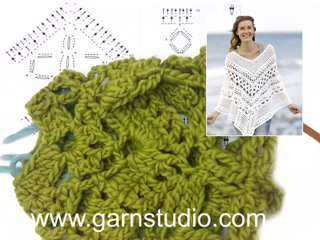


























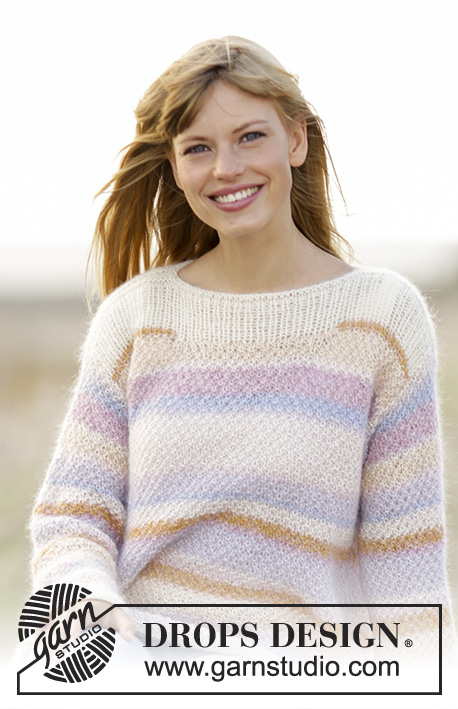






Comments / Questions (224)
Thanks for all your help. In row 6 how to you get over to the 4th dc to start the next 2 dtr? I looked at the pictures but don't see how to get to the 4th dc.
12.05.2016 - 05:31DROPS Design answered:
Dear Mrs Volonnino, at the beg of round 6, start with 4ch, then skip next tr, and *work the 2 dtr tog in the next tr (where the arrow is pointing to in diagram), then work 5 ch, 1 dc in same tr, 5 ch, 2 dtr worked tog in same st, skip next 3 tr* (2 at the end of 1st repeat in A.2 + 1 at the beg of next repeat) and repeat from *-*. Happy crocheting!
12.05.2016 - 09:14Thanks for your help. I must be missing something. I have 117 dc from corner to corner. If I start on the 12th dc how is there 116 dc to next corner? Also what is the reason I'm chaining 5 to start?
10.05.2016 - 23:47DROPS Design answered:
Dear Mrs Volonnino, my mistake, starting with 12th dc after corner on mid back, you will have 105 sts, work 13 x A.2a over the next 104 sts and then A.3a in the corner on mid front and continue with A.2a. Start with the 5 ch as stated in diagram, thes do not replace the first st on round. Happy crocheting!
11.05.2016 - 09:03In A2a row 1 what is the purpose of the first chain 5? Then skip 1 dc and start pattern? That leaves the chain 5 which doesn't look right. I have 234 dc in the previous row. That is not divisible by 8. What am I missing?
10.05.2016 - 04:16DROPS Design answered:
Dear Mrs Valonnino, you start A.1/A.2 in the 12th dc after mid back (the 12 dc will be worked at the end of round), 116 dc remain to next corner, repeat A.2a (8 sts) a total of 13 times (=over the next 116 dc), then work A.3a in the mid ch-space (mid front), repeat A.2a a total of 14 times, work A.3a in the mid ch-space (mid back) and finish with 1 repeat of A.2a and 1 sl st in the 4th ch from beg of round. Happy crocheting!
10.05.2016 - 09:40In A2a row 1 it says to start with a chain 5 then skip 1 dc and start pattern. What is the purpose of that first chain 5? When I count out the pattern it's not lining up in the corners. I have 234 dc in the previous row. HELP!
10.05.2016 - 04:04DROPS Design answered:
Dear Mrs Volonnino, after you have the 234 dc + 2 ch-space, cut the yarn and join yarn with 1 sl st in 12th dc from ch-space on mid back and work A.1a (= on first row, work 4+1 ch to start round and at the end of round, work 1 sl st in 4th ch from beg), and repeat A.2a a total of 13 times in width then work A.3a in the corner (mid front), repeat then A.2a a total of 14 times, work A.3a in the corner (mid back) and finish round with A.2a 1 time. Happy crocheting!
10.05.2016 - 09:37In your explanation, is a CH 5 missing at the end of row 6 and middle of 7? Also, are the SC around the stitch rather than in? The diagram uses both symbols and I am not sure which to use.
02.05.2016 - 18:39DROPS Design answered:
Dear Mrs Miller, you are right I'm sorry it should read: on row 6, in the ch-loop in the corner: 2 dtr tog, ch5, 2 sc in same ch-loop, ch5, 2 dtr tog, ch 5, 2 sc in same ch-loop, ch 5, 2 dtr tog. On row 7: ch5, 2 dtr tog in top of 2 dtr tog from round 6, 2 dtr tog in top of 2nd 2 dtr worked tog on round 6, ch5, 1 sc in same st, ch 5 2 dtr tog in same st, ch5, 1 sc in same st, ch5, 2 dtr tog in same st, 2 dtr tog in next 2 dtr tog from round 6, ch 5, 1 sc in same st. The sc are worked in the same st as the 2 dtr worked tog. Happy crocheting!
03.05.2016 - 08:48Your explanation and diagram helped me with rows 6-8 on chart A2a but now I need help with the same rows for the increase ( chart A3a, rows 6-8)
02.05.2016 - 02:46DROPS Design answered:
Dear Mrs Miller, in A.3a, work in the corner on row 6, in the ch-loop in the corner: 2 dtr tog, ch5, 2 sc in same ch-loop, ch5, 2 dtr tog, ch 5, 2 sc in same ch-loop, 2 dtr tog. On row 7 work: ch5, 2 dtr tog in top of 2 dtr tog from round 6, 2 dtr tog in top of 2nd 2 dtr worked tog on round 6, ch5, 1 sc in same st, 2 dtr tog in same st, ch5, 1 sc in same st, ch5, 2 dtr tog in same st, 2 dtr tog in next 2 dtr tog from round 6, ch 5, 1 sc in same st. Happy crocheting!
02.05.2016 - 16:18Jeg vil blive rigtig glad hvis I kan hjælpe mig med mit spørgsmål fra 16.4. Jeg kan stadig ikke se, hvordan jeg har fået så mange ekstra masker. Kan det være fordi, jeg tæller for mange med fra midt for og midt bag? Jeg håber meget, I kan hjælpe mig, for jeg hækler ponchoen for en veninde, og jeg vil gerne kunne give hende den snart. På forhånd tak.
26.04.2016 - 13:49DROPS Design answered:
Hej Susannah. Se herunder. Jeg haaber det "kun" er det som er fejl for dig og undskyld forsinkelsen. Dit spörgsmaal var lidt forsvundet under alle de andre her :-)
20.05.2016 - 12:25If you look at the row that is marked 4, then there are 10 rows. The 1st row of the diagram is for the previous pattern where the new pattern goes on to.
25.04.2016 - 17:45The diagram helped me understand rows 6-8. So is there a typo in the instructions diagram where it has row 11? Counting, I see that as row 10. Am I not seeing something? Thanks for all your help.
25.04.2016 - 16:16DROPS Design answered:
Dear Mrs Miller, this will be checked with Design, but diagram has a total of 11 rows, including first one with a star. Happy crocheting!
25.04.2016 - 16:46I am having a problem understanding diagram A.2a for rows 6-8. Is row 6 the 2 DTR into 1 DTR and then row 7 is 5 chains, a SC and then 5 chains? Then what is row 8? It looks like there are 2 rows before row 9. Please help.
25.04.2016 - 03:43DROPS Design answered:
Dear Mrs Miller, you will find here some pictures explaining how to crochet A.2a, they should help you to make these rows. Happy crocheting!
25.04.2016 - 10:36